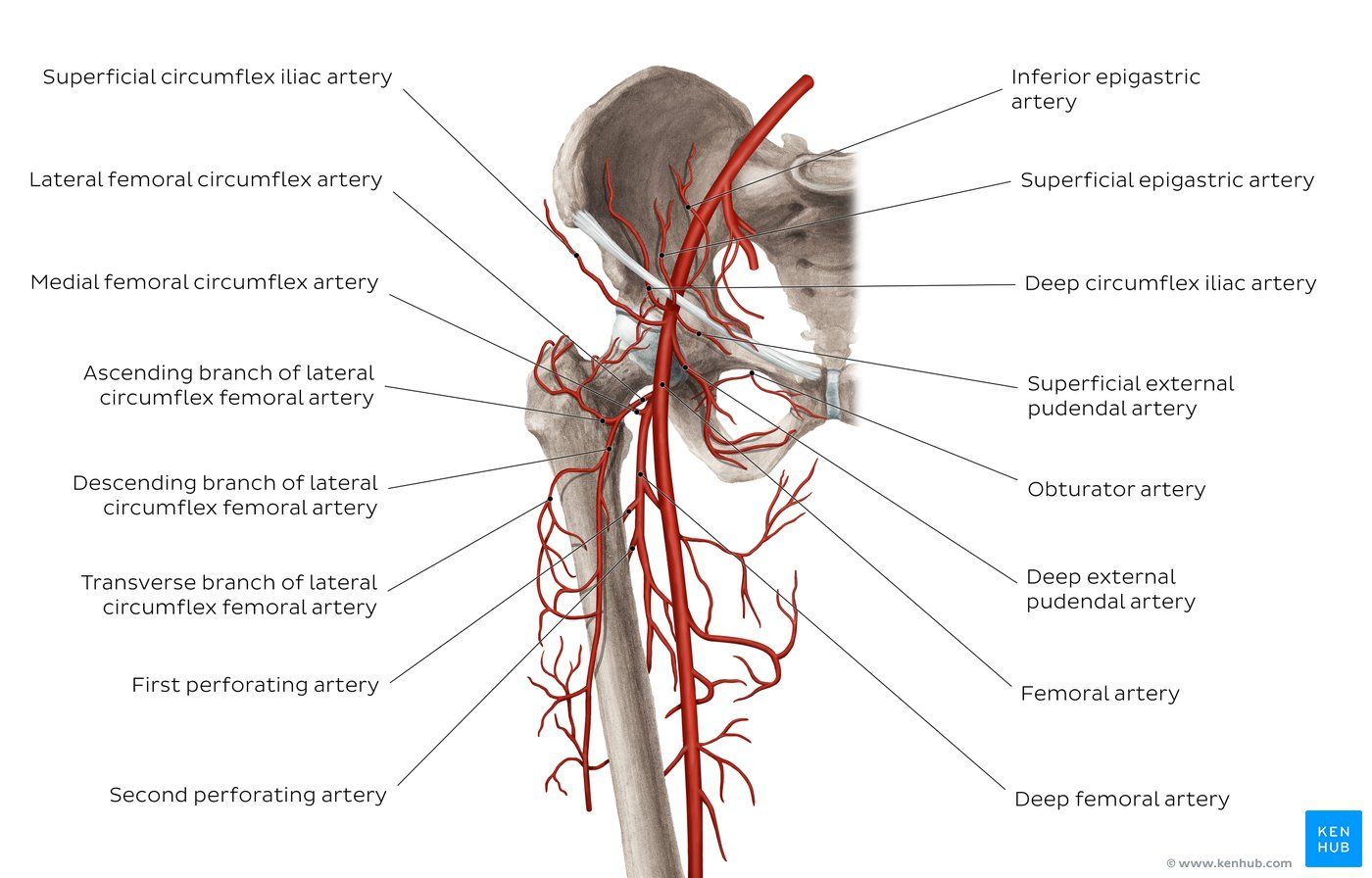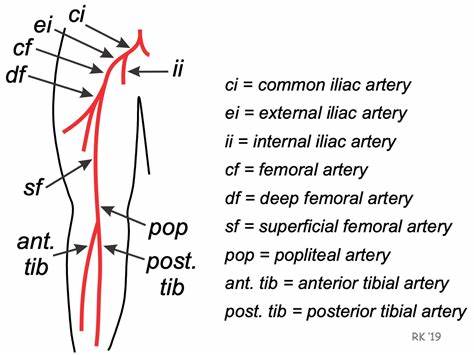Makindo Medical Notes"One small step for man, one large step for Makindo" |
|
|---|---|
| Download all this content in the Apps now Android App and Apple iPhone/Pad App | |
| MEDICAL DISCLAIMER: The contents are under continuing development and improvements and despite all efforts may contain errors of omission or fact. This is not to be used for the assessment, diagnosis, or management of patients. It should not be regarded as medical advice by healthcare workers or laypeople. It is for educational purposes only. Please adhere to your local protocols. Use the BNF for drug information. If you are unwell please seek urgent healthcare advice. If you do not accept this then please do not use the website. Makindo Ltd. |
The Femoral Artery
-
| About | Anaesthetics and Critical Care | Anatomy | Biochemistry | Cardiology | Clinical Cases | CompSci | Crib | Dermatology | Differentials | Drugs | ENT | Electrocardiogram | Embryology | Emergency Medicine | Endocrinology | Ethics | Foundation Doctors | Gastroenterology | General Information | General Practice | Genetics | Geriatric Medicine | Guidelines | Haematology | Hepatology | Immunology | Infectious Diseases | Infographic | Investigations | Lists | Microbiology | Miscellaneous | Nephrology | Neuroanatomy | Neurology | Nutrition | OSCE | Obstetrics Gynaecology | Oncology | Ophthalmology | Oral Medicine and Dentistry | Paediatrics | Palliative | Pathology | Pharmacology | Physiology | Procedures | Psychiatry | Radiology | Respiratory | Resuscitation | Rheumatology | Statistics and Research | Stroke | Surgery | Toxicology | Trauma and Orthopaedics | Twitter | Urology
Related Subjects: |The Coronary Arteries |The Axillary Artery |The Brachial Artery |The Carotid Artery |The Femoral Artery |The Popliteal artery |The Subclavian Artery |The Iliac Artery |The Brachial Artery |The Axillary Artery |The radial and Ulnar Artery
The femoral artery is a major blood vessel in the thigh that supplies oxygenated blood to the lower limb. It is a continuation of the external iliac artery and runs down the thigh to become the popliteal artery at the knee.

Anatomy of the Femoral Artery
- Origin :
- The femoral artery originates from the external iliac artery as it passes under the inguinal ligament.
- Course :
- Descends through the femoral triangle, bordered by the inguinal ligament, sartorius muscle, and adductor longus muscle.
- Passes through the adductor canal (Hunter's canal) and enters the popliteal fossa behind the knee.
- Continues as the popliteal artery after passing through the adductor hiatus.
Branches of the Femoral Artery
- Superficial Epigastric Artery :
- Supplies: The lower part of the anterior abdominal wall.
- Superficial Circumflex Iliac Artery :
- Supplies: The skin and superficial structures of the upper lateral thigh.
- Superficial and Deep External Pudendal Arteries :
- Supply: The external genitalia and perineum.
- Profunda Femoris Artery (Deep Femoral Artery) :
- Gives off several branches that supply the deep structures of the thigh, including the muscles and femur.
- Branches: Medial and lateral circumflex femoral arteries, and perforating arteries.
- Descending Genicular Artery :
- Supplies: The knee joint and surrounding structures.
Functions of the Femoral Artery
- Oxygenated Blood Supply :
- The primary function of the femoral artery is to supply oxygenated blood to the lower limb, including the thigh, knee, and lower leg.

Clinical Relevance
- Femoral Artery Pulse :
- The femoral artery pulse can be palpated in the femoral triangle. It is often used to assess circulation to the lower limb and as an access point for arterial cannulation.
- Femoral Artery Injury :
- Injuries to the femoral artery can occur due to trauma, fractures, or surgical complications.
- Symptoms: May include pain, swelling, decreased pulse, and ischaemia of the lower limb.
- Treatment: Surgical repair or vascular reconstruction is often required.
- Atherosclerosis :
- A condition characterized by the build-up of plaques in the femoral artery, leading to reduced blood flow to the lower limb.
- Symptoms: Claudication (pain in the leg during exercise), leg numbness, or weakness.
- Diagnosis: Ankle-brachial index (ABI), Doppler ultrasound, CT angiography, or MRI.
- Treatment: Lifestyle changes, medications, angioplasty, or surgical bypass.
- Peripheral Artery Disease (PAD) :
- A condition that can affect the femoral artery, leading to decreased blood flow to the lower limb.
- Symptoms: Claudication, leg pain, and ulcers or gangrene in severe cases.
- Treatment: Includes medical management, lifestyle modifications, and possibly surgical intervention.
- Femoral Artery Aneurysm :
- An abnormal dilation of the femoral artery that can lead to rupture or thrombosis.
- Symptoms: Often asymptomatic; may present as a pulsatile mass in the thigh or groin.
- Diagnosis: Ultrasound, CT angiography, or MRI.
- Treatment: Surgical repair or endovascular stenting.
Summary
The femoral artery is a crucial blood vessel that supplies oxygenated blood to the lower limb. It originates from the external iliac artery and travels down the thigh, giving off several branches before continuing as the popliteal artery. Understanding the anatomy and clinical relevance of the femoral artery is essential for diagnosing and managing conditions such as injuries, atherosclerosis, peripheral artery disease, and aneurysms.